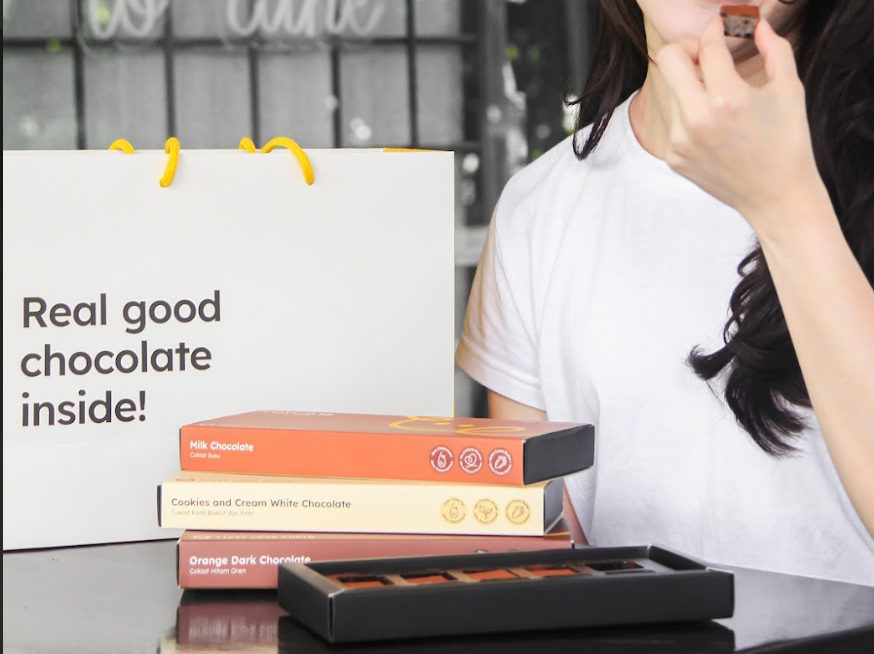Wait... Chocolate has a real and fake version? Absolutely! Dive into the world of chocolate, and you'll discover a fascinating tale of two: couverture chocolate - the real deal with its cocoa-rich goodness; and compound chocolate - the imitator with a concoction of fats and flavors.
As we delve into the layers of these cocoa creations, we unveil the secrets behind the labels, exploring the regulatory landscape and nutritional nuances that set them apart.
Compound Chocolate: A Closer Look
At first glance, compound chocolate might seem like a tempting treat, but it's essential to recognize its composition. Typically composed of vegetable fats, cocoa powder, and an assortment of emulsifiers, compound chocolate has earned a somewhat dubious reputation. The ingredients, including palm oil and a significant sugar content, raise questions about its health implications.
Ingredients breakdown:
- Vegetable Fat: Introduced to enhance its melt-in-the-mouth quality, it also serves as a functional substitute for cocoa butter in couverture chocolate.
- Cocoa Powder: Introduced for its chocolatey flavor, playing a role akin to cocoa mass in couverture chocolate, serving both to make it taste like chocolate and act like cocoa mass in couverture chocolate.
Technical breakdown:
- 34% Fat: Primarily sourced from palm oil - the big player.
- 45% Sugar: Achieving the desired sweetness.
- 21% Mixture: Comprising cocoa powder and other emulsifiers.
This composition incorporates elements often considered less health-conscious. However, it's noteworthy that the 20% cocoa powder, responsible for the delightful chocolatey flavor, carries no adverse health effects. This cocoa powder is meticulously derived from the remnants of roasted cocoa bean particles, remaining after the extraction of cocoa butter.
Compound chocolate often adheres to a fixed sweetness equivalent, aligning closely with a 55% couverture chocolate. The prevalence of sugar, comprising 45% of its composition, may also contribute to post-consumption effects such as heightened thirst or a mild throat irritation.

Couverture Chocolate: A Symphony of Cocoa Goodness
In stark contrast to compound chocolate, couverture chocolate emerges as the hero of the cocoa world. Its distinctive qualities, mandated by the Codex Alimentarius standards (CXS 87-1981), prescribe a minimum of 35% cocoa solids and not less than 31% cocoa butter, rendering it a premium choice for discerning chocolate enthusiasts.
Beyond meeting regulatory requirements, couverture chocolate goes the extra mile. With an additional infusion of cocoa butter, these chocolates boast not only a smoother texture but also enhanced nutritional content. This distinctive characteristic elevates couverture chocolate to a league of its own.
**The 2022 amendment to Codex Alimentarius CXS 87-1981 emphasizes the importance of cocoa butter in couverture chocolate.

Labeling Dilemma: The Compound Conundrum
In the complex world of chocolate labels, the compound finds itself facing a naming challenge. As per EU regulations, products heavy on cocoa powder – constituting 20% or more – can only be labeled as "candy," "chocolate-flavoured," or "chocolatey". This opens a discourse on the fine line between authenticity and flavor profiles in the chocolate industry.
EU regulations stipulate that products with 20% or more cocoa powder can only be labeled as "candy," "chocolate-flavoured," or "chocolatey".

Love18's Real Good Chocolate: Navigating the Malaysian Chocolate Landscape
Our commitment to crafting superior chocolate experiences is evident in every piece. Named and celebrated as Couverture, our chocolates stand out for their exceptional quality.
Plus point, we add EXTRA cocoa butter to our products, not only for a smoother texture but also to enhance the nutritional content—yes, that's a captivating topic in itself!
Unlike compound chocolates that commonly feature a fixed sweetness, Love18's couverture chocolates offer a delightful spectrum, ranging from 95%, 72% and 60%.
Immerse yourself in the finest couverture chocolates, meticulously sourced from renowned regions such as Belgium, France, Italy, and beyond. Renowned for their superior taste, texture, and appearance, Love18's Real Good Chocolates are the hallmark of quality. We pride ourselves on being:
Read more on <Our Commitment> page
References:
- Cococo Chocolatiers. (2022, June 27). What is Couverture Chocolate? Retrieved from [https://cococochocolatiers.com/blogs/chocolate-blog/all-about-couverture-chocolate#:~:text=Couverture%20chocolate%20has%20similar%20but,less%20than%2031%25%20cocoa%20butter]
- Directive 2000/36/EC of the European Parliament and of the Council. (2000, June 23). Official Journal L 197, 03/08/2000, P. 0019 - 0025. [32000L0036]. Retrieved from: [https://eur-lex.europa.eu/legal-content/EN/TXT/HTML/?uri=CELEX%3A32000L0036]
- Standard for Chocolate and Chocolate Products - CXS 87-1981. (1981). Adopted in 1981. Revised in 2003. Amended in 2016, 2022. 2022 Amendment. Retreived from: [https://www.fao.org/fao-who-codexalimentarius/sh-proxy/en/?lnk=1&url=https%253A%252F%252Fworkspace.fao.org%252Fsites%252Fcodex%252FStandards%252FCXS%2B87-1981%252FCXS_087e.pdf]
- Hotel Chocolat. (2021, May 6). What’s the Difference Between Compound Chocolate and Real Chocolate? Retrieved from: [https://www.hotelchocolat.com/uk/blog/chocolateknowledge/whats-the-difference-between-compound-chocolate-and-real-chocolate.html]
Only at Love18chocolate.

